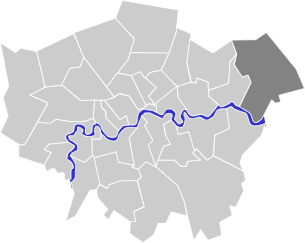Boroughs are facing unprecedented reductions in core funding at the same time as demand for key local government services is rising. It is therefore essential that the funding allocated by central government to meet the estimated shortfall covers the true cost of delivering new school places in the capital.
£1 billion needed to meet the shortfall
Combining the cost per place analysis with capacity shortfall analysis, it is possible to estimate the amount of funding required in London over the next six years. Between 2017/18 and 2022/23, London requires an estimated £1.6 billion to meet the shortfall in mainstream school places. Basic need allocations have been published for the first three years of this timeframe as shown in the graph below. London boroughs will receive around £600 million through Basic Need between 2017/18 and 2019/20. Around a further £1 billion of funding will therefore be required – either through the basic need grant itself or through the creation of new free schools in areas of demand – to meet the shortfall. Like the capacity estimates on which they rely, these funding estimates are inherently uncertain and potentially subject to change as the trends at primary level become clearer.
Three-year basic need allocations were introduced by DfE in 2013 and have enabled boroughs to make longer-term plans for the delivery of new school places. Secondary projects are larger and more complex than primary projects, which typically leads to longer timescales for delivery. An extension of multi-year basic allocations to a fourth year would provide boroughs with the certainty needed to make longer-term planning decisions at secondary level.
Boroughs can only deliver a sufficient number of new school places with a sufficient level of funding. Whilst the cost per place allocated through the Basic Need grant has increased significantly in recent years, the level of funding available does not fully meet the actual cost of delivery. This is confirmed by the significant and unsustainable amount of funding boroughs currently provide to top-up basic need allocations, including out of borrowing and general council funds.
How we worked it out
Cost per place
The Department for Education allocates Basic Need funding to councils for the delivery of new school places. There has been a significant increase in the funding per place applied within the Basic Need methodology in recent years, bringing the funding provided more closely in line with actual costs. However, as the National Audit Office found in their recent Capital Funding for Schools report, “basic need funding still does not fully cover the costs that local authorities incur in creating new school places”.
London Councils collected individual project data from 23 boroughs, which is submitted to and verified by DfE as part of the annual school capacity survey (SCAP). This data shows that the cost per place provided through Basic Need still does not meet the actual cost of providing new places, despite increases in recent years as our table below illustrates. It is likely that the actual cost per place will rise as lower-cost expansion options, such as adapting underused classrooms, are exhausted.
|
|
Cost per place |
Basic need funding rates (London) |
|
Primary |
£21,147 |
£16,495 - £17,577 |
|
Secondary |
£27,299 |
£21,444 - £22,850 |
Capacity
Despite significant challenges around land and funding, boroughs have played a central role in the delivery of significant new school capacity. Our graph below shows that between May 2015 and May 2016, school capacity in London increased by over 30,000. 35 per cent of all new secondary school capacity was delivered in London, reflecting the distinct demographic pressures of London compared to the rest of the country.
Whilst this new capacity has met a substantial share of the demand identified in previous editions of Do the Maths, a shortfall in places still persists. A combination of new schools and expansion projects will therefore be essential for the foreseeable future. Boroughs already have plans in place to deliver 88 per cent of forecast need at secondary level, with 66 per cent of plans across London already classed as “secure” (i.e. funding secured and, for new schools, a confirmed site). Especially as demand increasingly focuses on more costly secondary provision, boroughs will only be able to meet the remaining shortfall in places with an adequate level of funding from central government.
Key recommendations
- Enable Regional School Commissioners to direct academies to expand their provision where they have capacity and there is demand locally for more places
- Undertake a shift in the way it is managing the roll out of the free school programme by:
- Ensuring strategic join-up between local government and the ESFA on free schools and land acquisition from the outset to ensure better value for money and delivering of sufficient school places
- Only approving free schools where they meet basic need
- Recognising and covering the costs to councils in working on free schools
- Compensating local authorities for all contingency costs when a free school has been delayed
- Aiming for all new secondary free schools to be no smaller than six Forms of Entry

